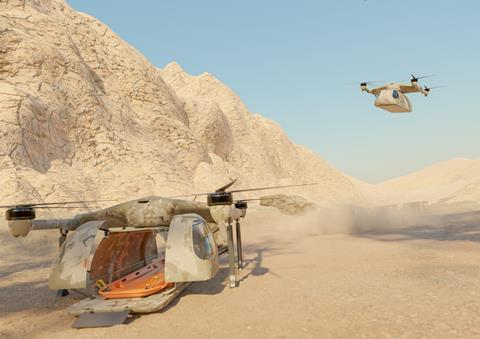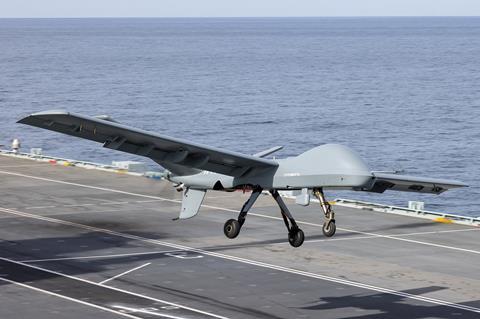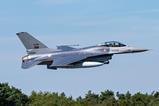The increased future use of uncrewed systems will provide the UK’s military with vital operational capability and increased combat mass, according to its newly published Defence Drone Strategy.
“The seamless integration and operations of uncrewed and autonomous systems will significantly enhance our defence capabilities,” the report says. “Through constant adaptation and iterative development, they will deliver a more potent military effect that ensures we are better able to defend and deter.”

“The conflict in Ukraine has become a very visible representation of a ‘new way of war’, one characterised by innovation, the proliferation of technology, digitisation of the battlefield and the need to rapidly deploy capability fit for the tempo of operations,” UK minister for defence procurement James Cartlidge says in the document, which was published on 22 February.
“There is no clearer example than the development and employment of uncrewed systems, where low-cost solutions are increasingly defeating more exquisite capabilities and delivering disproportionate impact on the battlefield.”
Noting that the UK’s interest in such assets currently spans tasks such as naval mine clearance, one-way attack, heavy-lift and intelligence/surveillance, he adds: “It is in the uncrewed space that we will increasingly drive the mass of our forces, whilst… strengthening the lethality and survivability of our platforms and personnel.”
“The frontline operational environment [in Ukraine] is the most challenging for these types of logistic, find, and strike systems, with previously unseen levels of electronic warfare [and] high attrition rates,” the report says.
“Our initial priority is the successful delivery of the Ukraine-UK uncrewed systems initiative,” it adds. “We will drive procurement at scale to meet the demands both of our armed forces and those of Ukraine”.
The UK has to date donated more than 4,000 drones to Kyiv, with its continued commitment to value over £200 million ($252 million) during 2024.
Cartlidge points to the need for “a more deliberate and coherent partnership” between the Ministry of Defence (MoD) and UK defence industrial base, to ensure the nation’s ability to “spirally and collaboratively develop platforms and components to keep up with relentless cycles of battlefield adaptation”. This relationship also should “foster a culture of delivery-focused innovation”, he adds.
Outlining technological challenges facing the military, the strategy states: “The single services need to be able to integrate uncrewed systems across domains, alongside counter-uncrewed systems and our allies,” along with manned assets.
The MoD notes that its strategy will be supported “by at least £4.5 billion of investment over the next decade”. This commitment “offers the opportunity to transform our approach to the acquisition, integration, and exploitation of uncrewed systems,” says UK Strategic Command commander General Jim Hockenhull.
The Defence Drone Strategy was formally launched at Malloy Aeronautics’ production site near Maidenhead, Surrey. The uncrewed systems producer was recently acquired by BAE Systems, which has been working with it to develop the electric-powered, 300kg (660lb)-payload T-650.
Designed for applications ranging from cargo transport to deploying a lightweight torpedo or performing casualty evacuation duties, the T-650 is scheduled to make its first flight later this year.
The strategy document also provides fresh details of current development and trials activities being conducted by the UK armed forces.
“Alongside the Global Combat Air Programme, the RAF [Royal Air Force] is testing cost-effective autonomous collaborative platforms [ACPs] designed to leverage cutting edge technology to support high-risk combat operations,” it says. “The ACP programme has a range of experimental and development platforms able to deliver strategic effects at range,” it adds, without providing further details.

Other recent notable activities have included operating a W Autonomous Systems-developed cargo drone and General Atomics Aeronautical Systems Mojave unmanned air vehicle from the deck of the Royal Navy aircraft carrier HMS Prince of Wales.
Meanwhile, the report says operations with the RAF’s General Atomics MQ-9 Reaper fleet have exceeded 140,000 flying hours since the type’s introduction in 2007, with “1,500 weapons releases”. The service late last year launched training activities in the UK using the replacement MQ-9B Protector RG1, operations with which are due to commence this year.

















































